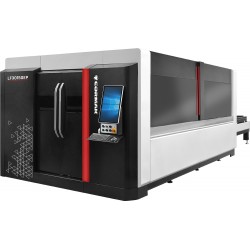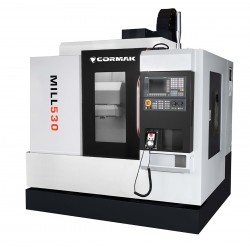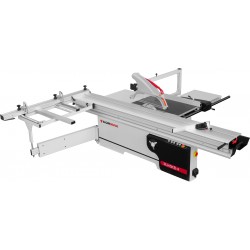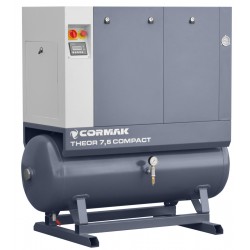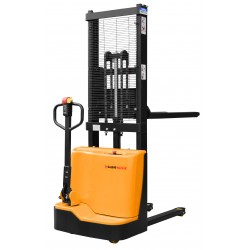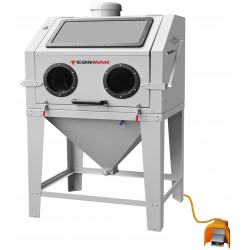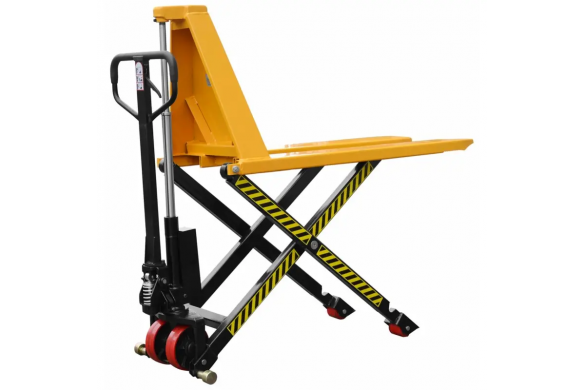Internal means of transport in the warehouse

Efficient internal transport systems in a warehouse are the foundation of effective goods flow management in any industrial plant, logistics center, or high-bay warehouse. Properly selected types of internal transport not only optimize work but also increase safety and the ergonomics of operations.
In the era of automation and growing logistical demands, choosing the right internal transport systems in a warehouse becomes a key element of every modern company's operational strategy.
In today’s article, you will learn:
- What are internal transport systems?
- Types of internal transport – what to choose?
- Main functions of internal transport in a warehouse
- How to choose the right internal transport equipment?
What are internal transport systems?
Internal transport systems in a warehouse are devices and vehicles used to move materials, semi-finished, or finished products within a facility – inside halls, warehouses, or between production stations. They are essential for internal logistics and directly impact overall process efficiency.
As labor costs rise and productivity pressures increase, automated internal transport devices play a growing role. Order picking systems, electric low-emission forklifts, and solutions integrated with WMS and ERP systems are becoming the standard in modern logistics facilities. Investing in such technologies boosts a company’s competitiveness, reduces human error, and improves working conditions.
On the industrial machinery manufacturer’s website, you can find a wide range of modern equipment supporting internal transport tasks.
Types of internal transport – what to choose?
Depending on the business profile, warehouse space, and type of transported goods, various types of internal transport can be distinguished. The most common solutions include:
1. Forklifts
Forklifts are essential internal transport equipment in warehouses, especially where intensive loading and unloading take place. They offer excellent maneuverability in tight spaces and can lift pallets to significant heights.
2. Stackers and mast pallet trucks
Stackers and mast pallet trucks complement the machine fleet, enabling multi-level racking and saving space while offering flexibility.
3. Electric and scissor pallet trucks
Electric pallet trucks are ideal for quick and effortless load movement, while scissor pallet trucks are suited for ergonomic lifting tasks.
4. Platform trucks and manual pallet jacks
Platform trucks and classic pallet jacks are perfect for moving small goods over short distances due to their simple design and reliability.
5. Cranes and transport rollers
Transport rollers and lifts along with gantry cranes allow for safe movement of heavy machinery and multi-ton loads.
6. Goods lifts and mobile shelving
Goods lifts and mobile shelving enhance space efficiency and speed up order picking in automated storage systems.
Main functions of internal transport in a warehouse
Internal transport serves many important functions:
- ensures smooth logistics processes,
- reduces loading and unloading times,
- enables safe material handling,
- improves work ergonomics and reduces physical effort,
- supports automation of warehouse operations.
Proper selection of transport systems helps reduce operating costs and increase overall organizational efficiency.
How to choose the right internal transport equipment?
The selection of proper equipment depends on several key factors:
- type and weight of goods,
- warehouse layout,
- intensity and nature of operations,
- need for process automation.
Safety aspects must also be considered when implementing internal transport in warehouses. Occupational safety and ergonomic standards require operators to have proper visibility, load stability, and intuitive control systems. Regular technical inspections and staff training directly impact efficiency and reduce downtime. A well-configured machine park – including platform trucks and roller systems – creates a safe and efficient work environment.
At Cormak – a manufacturer of industrial machines – you’ll find both simple manual devices and advanced internal transport systems tailored to your company’s needs.

